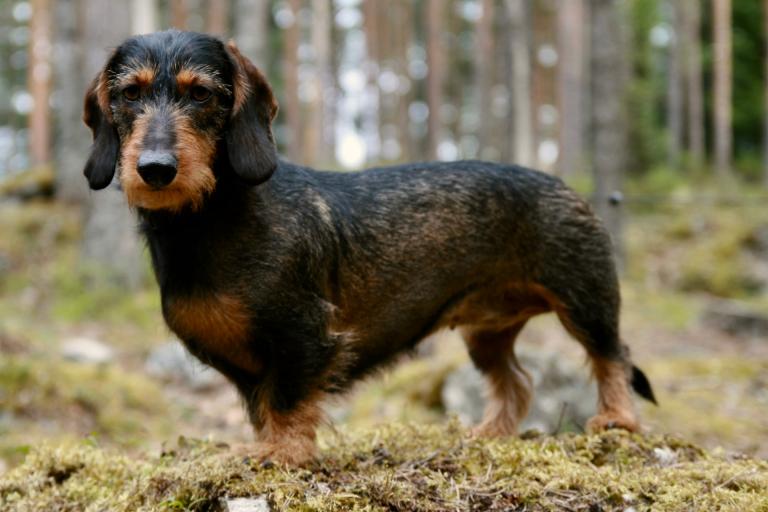Cone-rod dystrophy 3 | crd-PRA (crd3-PRA wirehaired Dachshund)
Cone-rod dystrophy 3 (crd3) is an eye disease in which the cones and rods on the retina degenerate. Clinical symptoms usually appear in the first 3 weeks of life and lead to total blindness in early adulthood.
The disease occurs in the wirehaired Dachshund (Teckel). The inheritance is autosomal recessive.
Synonym: crd-PRA
Genetic Test: available in Shop
Symptoms
- Loss of visual acuity
- Total blindness in early adulthood
General Information
- Cone-rod dystrophy 3 (crd3) is caused by the degeneration (dystrophy) of the visual sensory cells.
- First, the cones (focused vision/colour vision) in the centre of the retina begin to degenerate.
- Later, the rods (twilight vision/low light vision) in the outer part of the retina are also affected.
- Clinical symptoms usually appear in the first 3 weeks of life.
Test Information
This mutation test detects a 180-bp deletion in exon/intron 5 of the NPHP4 gene.
Test in Shop
Also in the:
Genotype and Lab Report
Inheritance: autosomal recessive
→ The disease only occurs when both alleles of the gene are affected by the mutation (crd3/crd3). Dogs that have only one allele with the causative mutation (N/crd3) are clinically healthy carriers.
Genotypes:
N/N = genetically normal
The dog has no variants for crd3 and thus cannot pass it on to offspring.
N/crd3 = a carrier
The dog is a clinically healthy carrier. The variation is passed on 50% to the offspring, which are also carriers.
crd3/crd3 = affected
The variation will be passed on to 100% to the offspring.
Recommendations
- Carrier animals can be bred to normal animals (N/crd3 x N/N). Before using the offspring in breeding, it should be tested whether they are normal or carriers.
- Mating two carrier animals (N/crd3 x N/crd3) should be avoided because there is a 25% chance that the offspring will be affected.
- Affected animals (crd3/crd3) should be excluded from breeding.
Literature
Palánová, A., Schröffelová, D., Přibáňová, M., Dvořáková, V., Stratil, A.: Analysis of a deletion in the nephronophthisis 4 gene in different dog breeds. Vet Ophthalmol 17:76-8, 2014. Pubmed reference: 23998563. DOI: 10.1111/vop.12092.
Wiik, AC., Thoresen, SI., Wade, C., Lindblad-Toh, K., Lingaas, F: A population study of a mutation allele associated with cone-rod dystrophy in the standard wire-haired dachshund. Anim Genet 40:572-4, 2009. Pubmed reference: 19392817. DOI: 10.1111/j.1365-2052.2009.01877.x.
Wiik, A.C., Wade, C., Biagi, T., Ropstad, E.O., Bjerkås, E., Lindblad-Toh, K., Lingaas, F.: A deletion in nephronophthisis 4 (NPHP4) is associated with recessive cone-rod dystrophy in standard wire-haired dachshund. Genome Res 18:1415-21, 2008. Pubmed reference: 18687878. DOI: 10.1101/gr.074302.107.
Further information is available at: Online Mendelian Inheritance in Animals.

